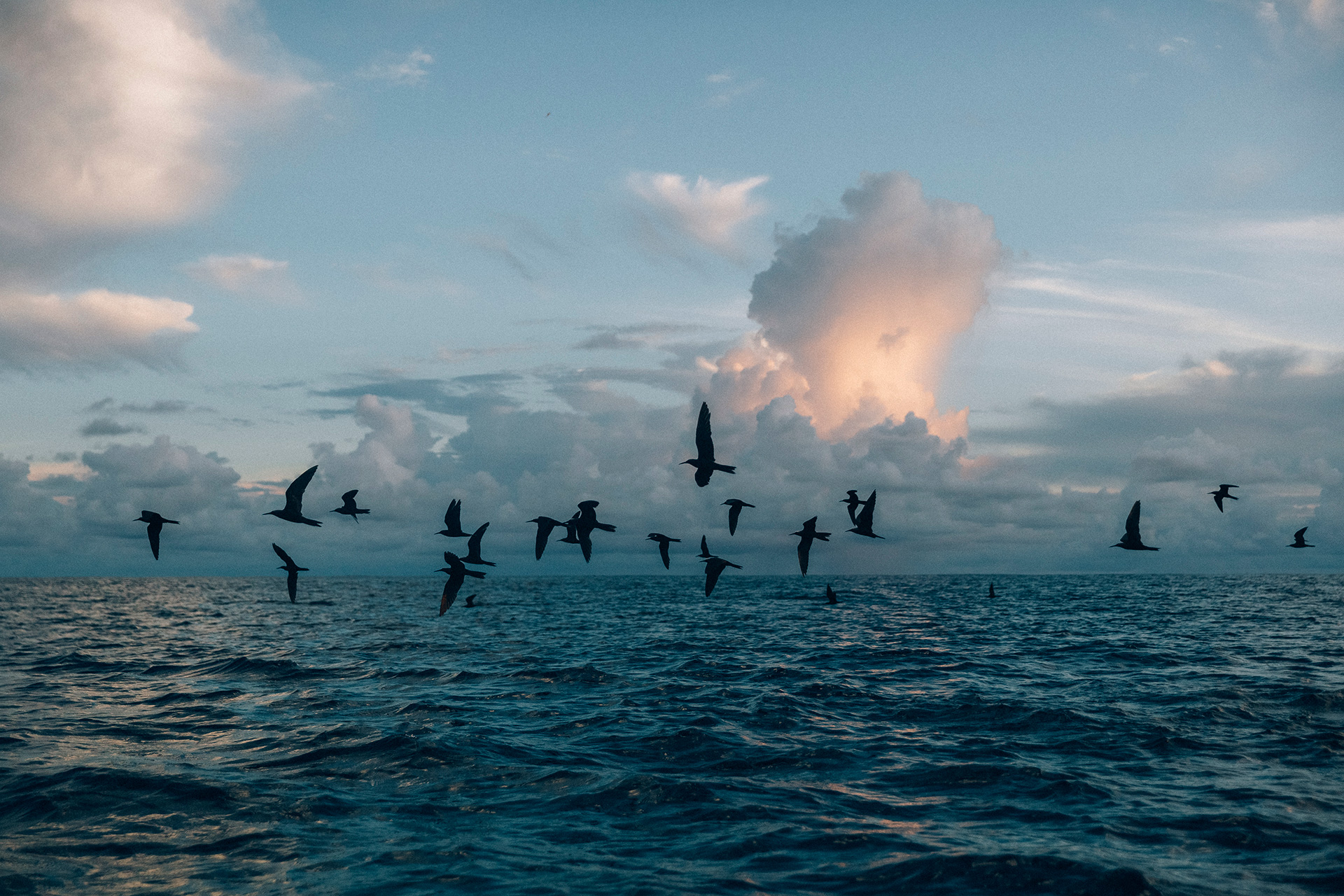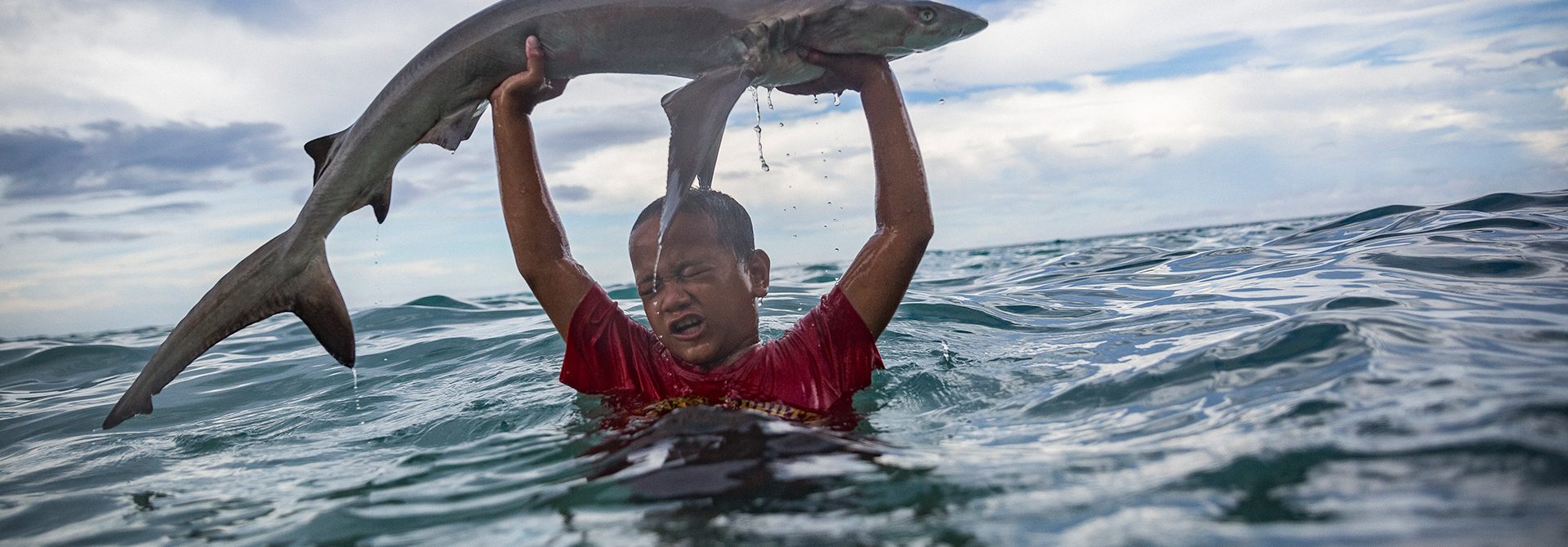
Insubmersible: Life in Tokelau, the Most Remote Country in the World

Photographer of the British Panos Pictures agency. Was born in Russia, lives in Dakar, Senegal. Works with the UN, UNICEF, Amnesty International, Oxfam, and ChildFund. His work was published in The Guardian, National Geographic, GEO, International Herald Tribune, The Atlantic, The Global Mail, Internazionale, Stern, Le Monde, Paris Match, Marie Claire, BBC, Sydney Morning Herald, Russian Reporter, Vokrug Sveta, and Takie Dela.
— Tokelau is one of the smallest and most remote nations in the world. Consisting of three coral atolls in the middle of the Pacific Ocean, 580 km north of American Samoa and covering a mere 10 square kilometers in combined surface area, it can only be accessed via a lengthy fortnightly boat ride from Samoa. Much of the territory’s land is no more than a couple of meters above sea level making making it particularly susceptible to the greatest threat facing small island nations across the Pacific region: climate change and rising sea levels.
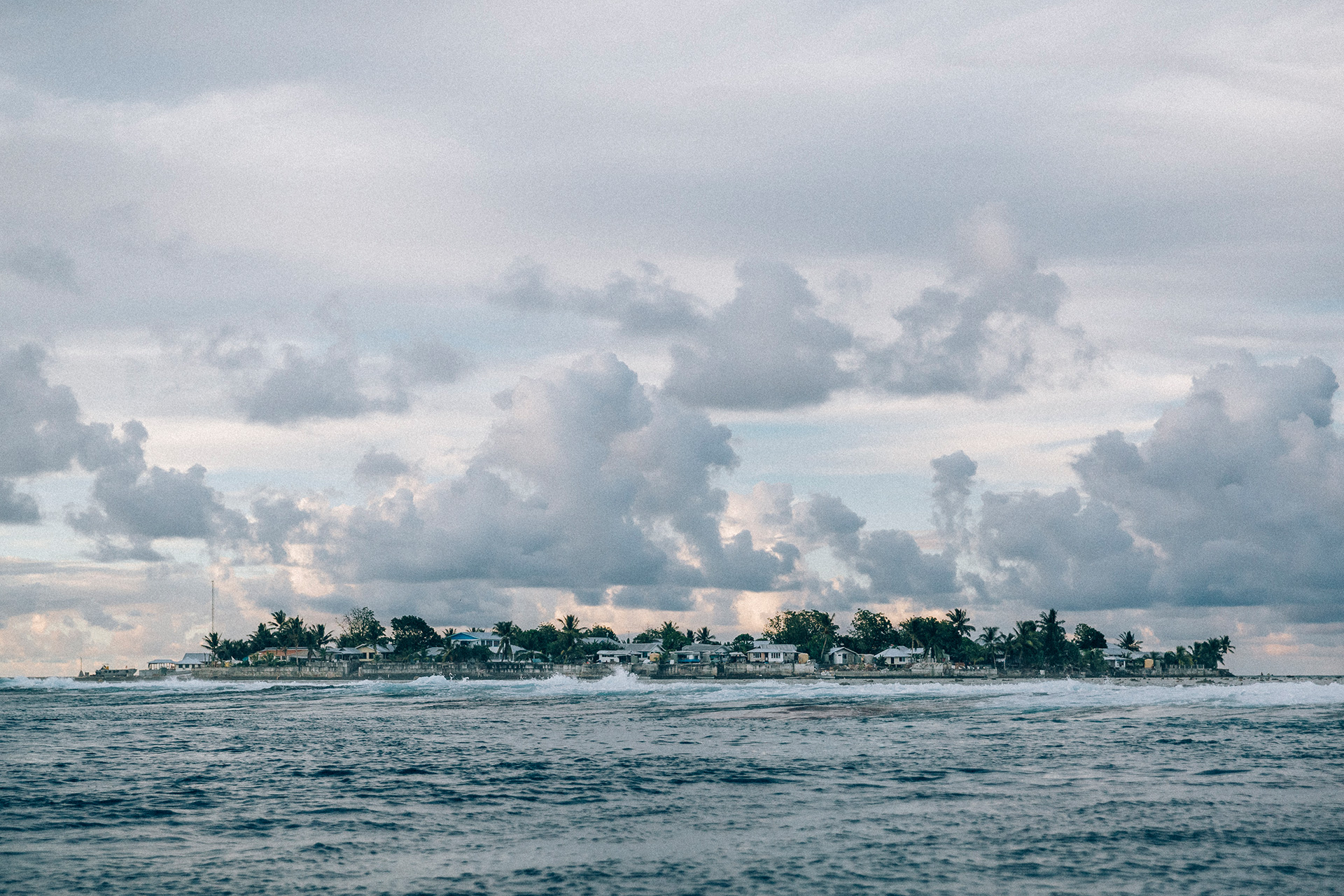
Concrete walls surround Fale village on Fakaofo Atoll. There are 355 people living on the islet, and 200 more on the neighboring islet of Fenua Fala.
Over the past decade, tropical storms have been bettering the tiny landmass, causing flooding and extensive damage to property. In February 2005, Cyclone Percy, a category 5 storm, inundated all three atolls which form rings around lagoons and were lashed by waters from both sides, submerging villages. Seawalls built to stem floodwaters were simply washed away. As sea water levels rise, Tokelauans are seeing the limited ground beneath their feet disappear into the ocean.
The territory’s 1,500-odd inhabitants, who hold New Zealand passports, rely heavily on aid from New Zealand which makes up a large part of the government’s annual budget. According to the CIA’s List of Countries by GDP, Tokelau has the smallest economy of any country in the world. Exports of copra, stamps and handicrafts bring in some revenue but large amounts of imported foodstuffs, building materials, and fuel consume any import earnings. Fishing licenses are another form of revenue but these have been jeopardized by warming sea temperatures that are bleaching coral reefs and disrupting fish habitats.
Tokelau plans to become the first country in the world to generate all of its electricity from renewable sources, with over 90% coming from solar panels and the rest from locally produced coconut oil.
Yet while the country leads the way in sustainable living its tiny territory is threatened by erosion and rising sea levels that have started to impact on subsistence agriculture which is increasing the amount of food the country needs to import from abroad.
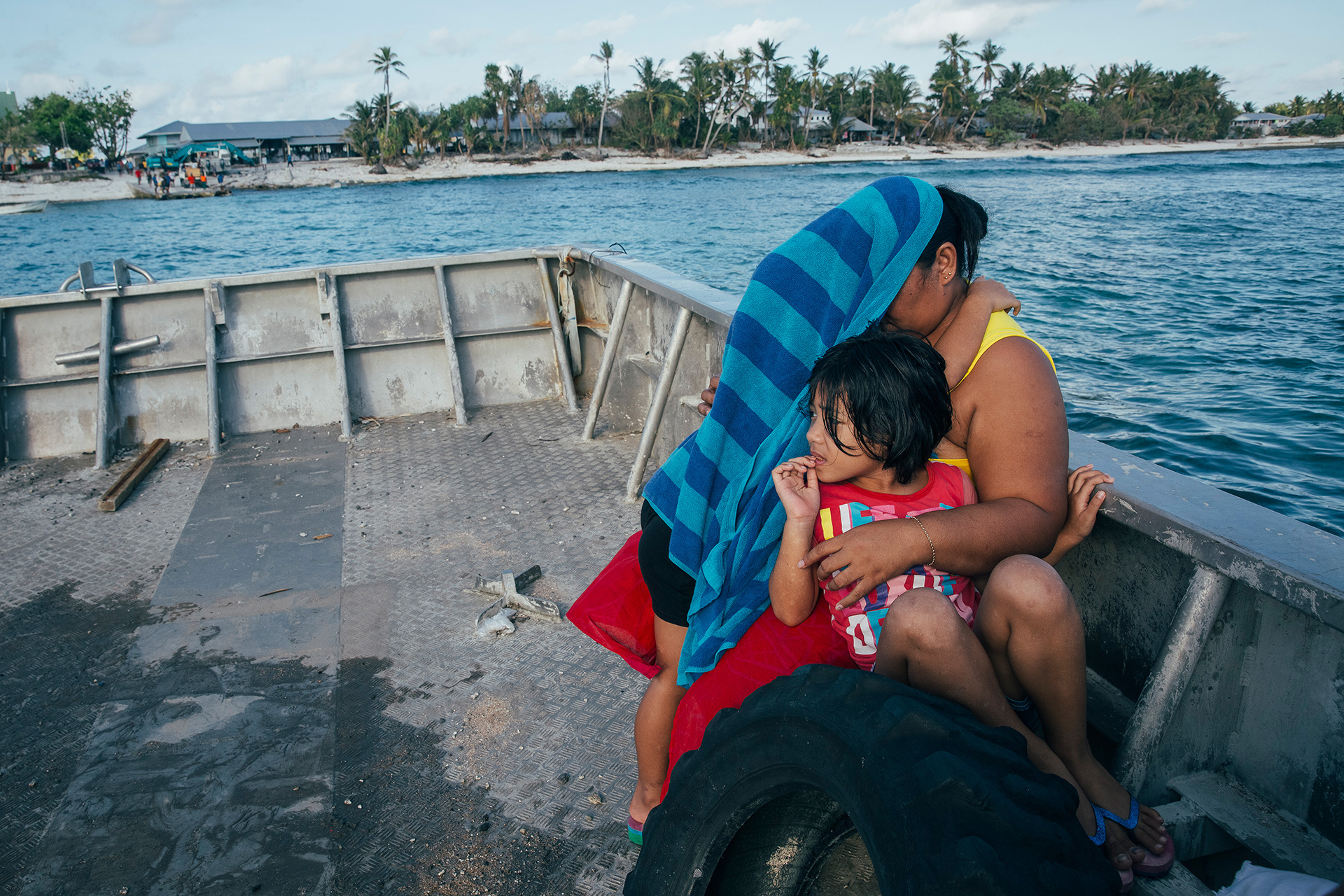
People traveling on a barge to Nukunonu village. More than 420 people live on Nukunonu. Fresh water is scarce and collected in water tanks. Food, except fish and coconuts, is mostly brought by sea from Samoa.
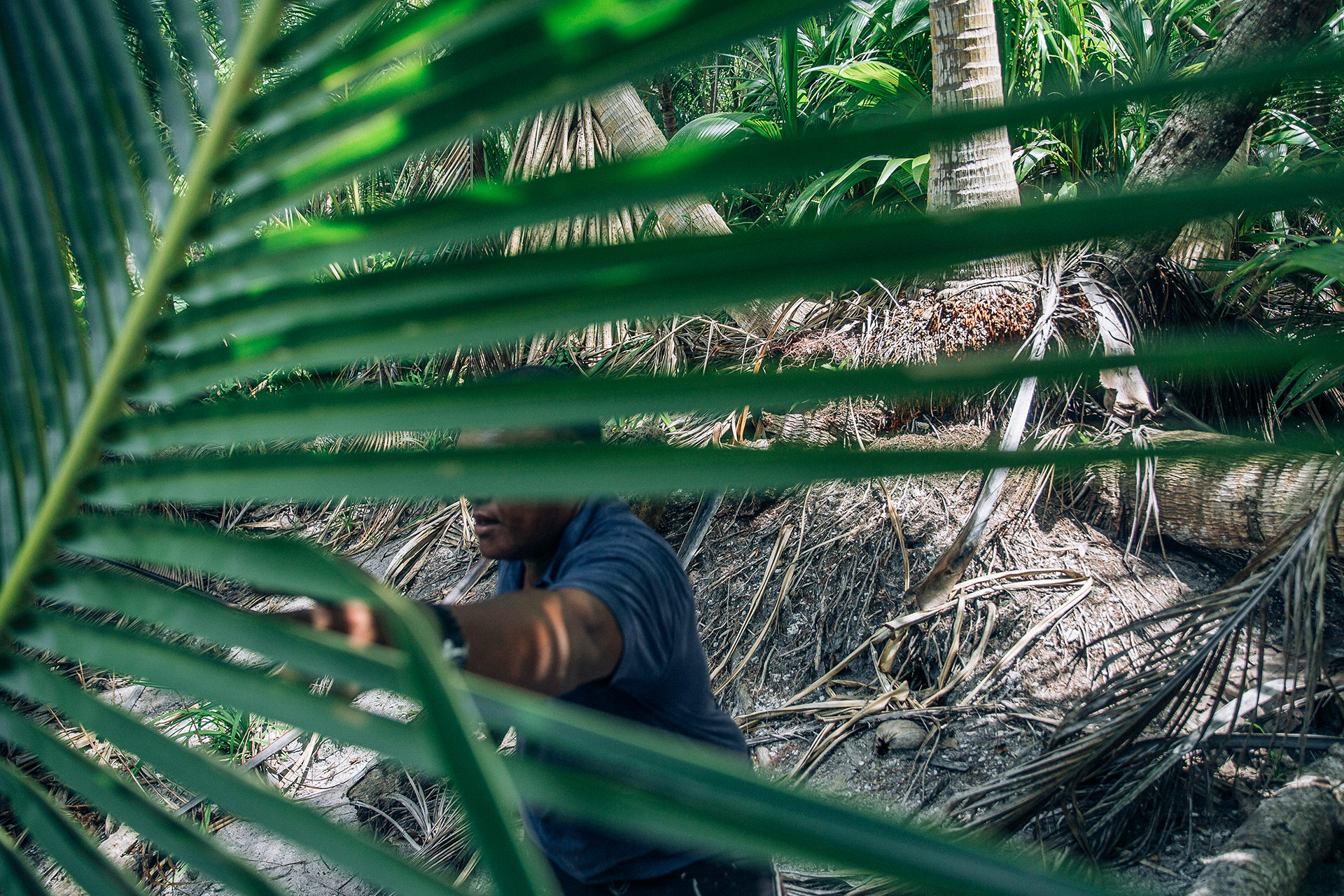
Ehekia Sili, 51, is working in his garden on Te Lafu islet on Fakaofo atoll.
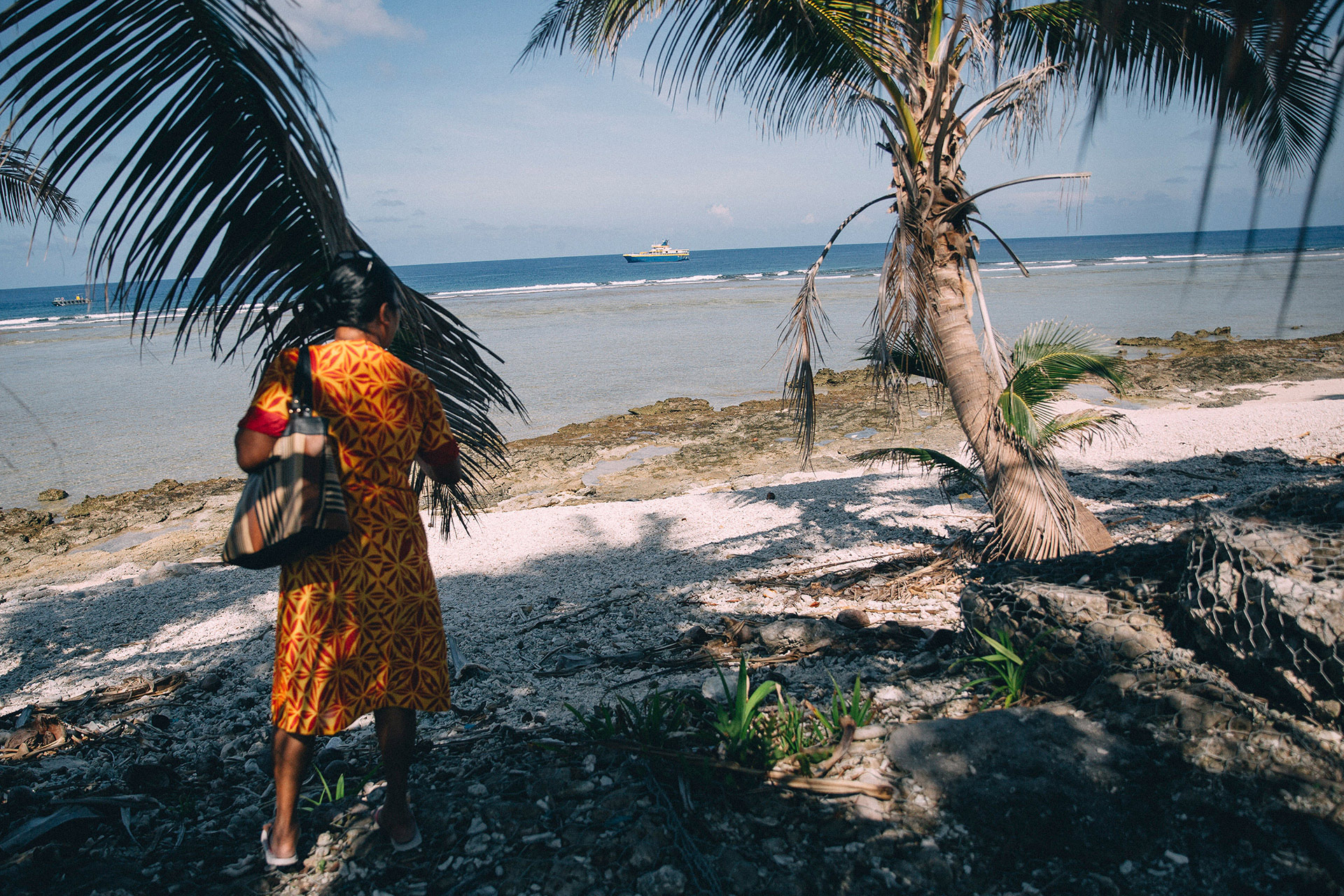
A woman is standing on the destroyed beach of the Atafu islet, which is located on the eponymous atoll. This is the smallest atoll of Tokelau. People here survive thanks to fishing, growing coconuts, taro, and pandan.
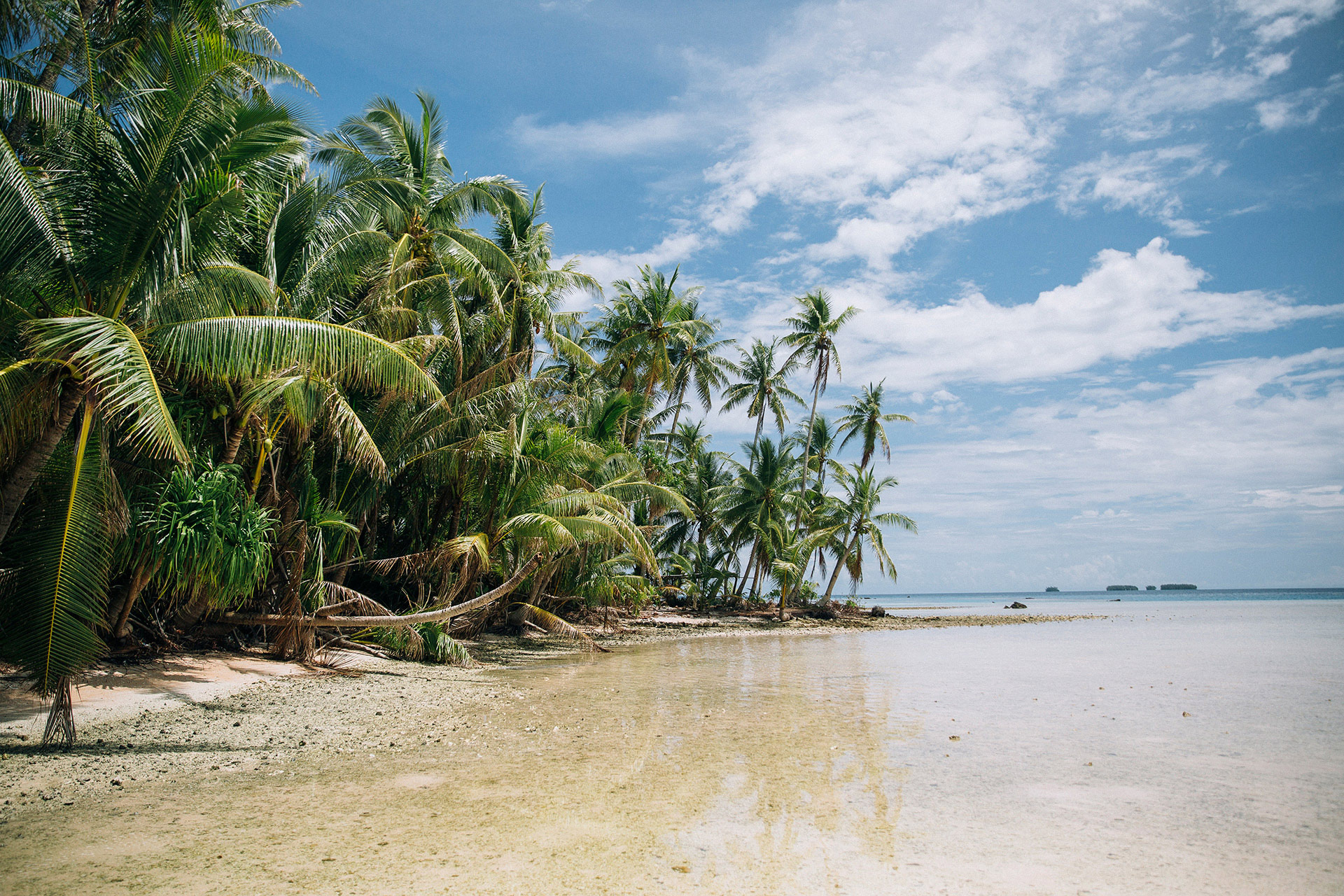
Palm trees growing along the shore of Te Lafu islet. People here grow taro and coconuts.
I have wanted to visit Tokelau for many years. Ever since I started working in Oceania, I have been trying to find out how to make it possible. Despite the fact that it is an overseas territory of New Zealand, everybody needs a visa to come to Tokelau. I tried to get a visa in 2015, but I failed. In 2016, I was working for UNICEF, and the Fund wrote a couple letters for me. They helped me not only to get a visa, but also permissions for all three atolls — to get ashore and take photographs there.
In March 2016, I finally took a ship, and after more than a day on the water we arrived at the first atoll, Atafu, where I spent half a day. Then, we picked up some passengers, and spent the night sailing to the middle atoll, Nukunonu. We spent the night there, and after one more day, got to the main atoll, Fakaofo. I disembarked there with all my luggage, and they promised to pick me up in a week. I ended up staying for two weeks, because the ship didn’t show up.
Tokelau has a life with a very specific pace. There are about 250 people living in the main village of Atafu atoll, and you can walk around the islet in five minutes. The houses are build close to each other, sometime at arm’s length. People spend their days either working or fishing and going to church. I visited during the Easter week, and during that time many ceremonies took place, everybody was busy getting ready for Easter celebrations.
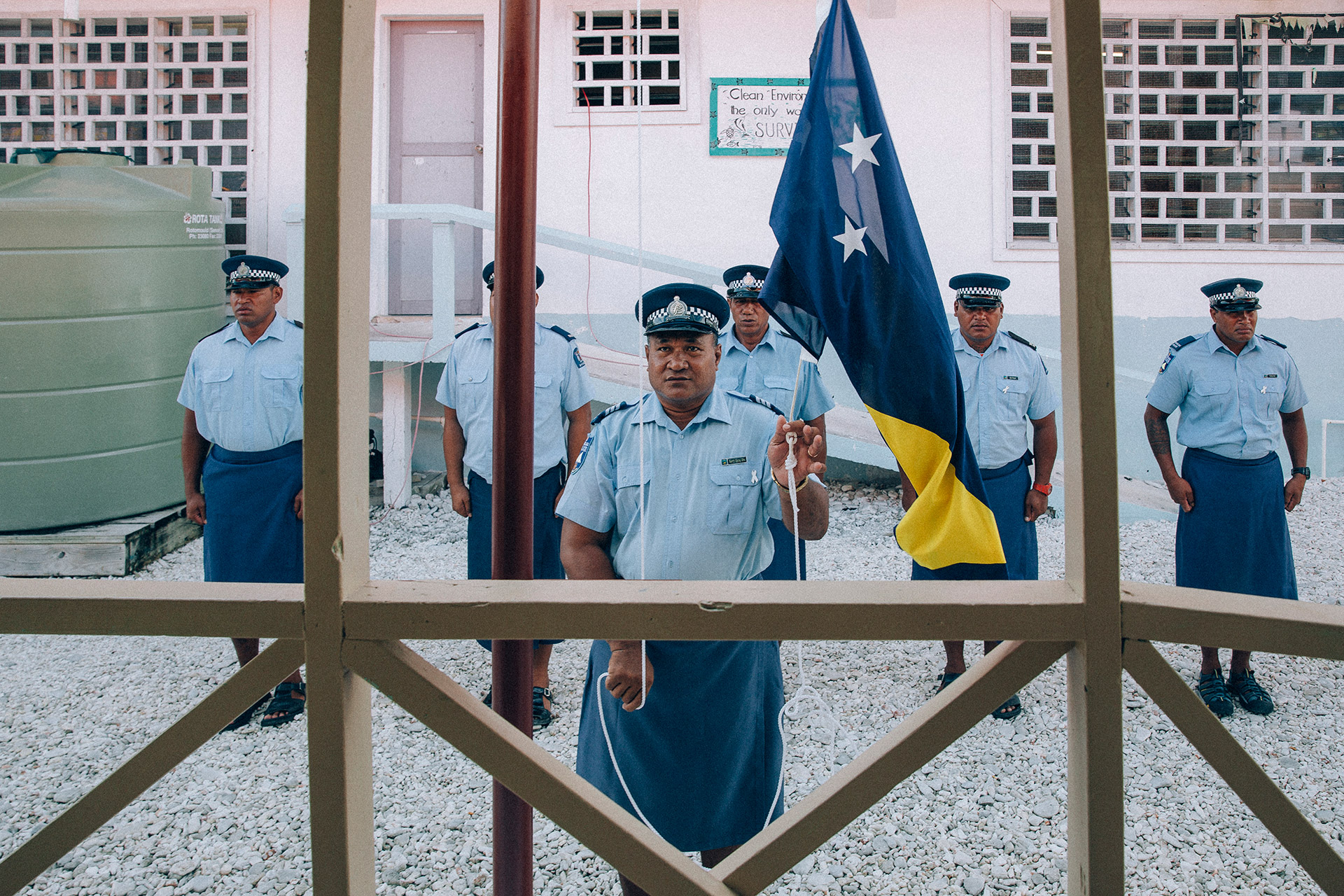
A head of the Fakaofo Police department raises the Tokelauan flag at the start of a parliamentary session. Seven policeman patrol an island of 355 people making sure that local residents comply with the curfews that are implemented every day on the island to maintain silence in the evening and for religious purposes. According to the rules, all the people should stop working after 6 pm and on Sundays no work is allowed. From 18:00 to 18:50 people can't make any noise or play game,s and are supposed to rest after the day's work. From 18:50 till 19:00 all the residents should stay indoors and pray. From 19:00 to 21:00 people swim, do their chores, or play sports. At 21:00 all the children have to go to bed. After 23:00 it is not recommended to walk on the streets or make any noise.
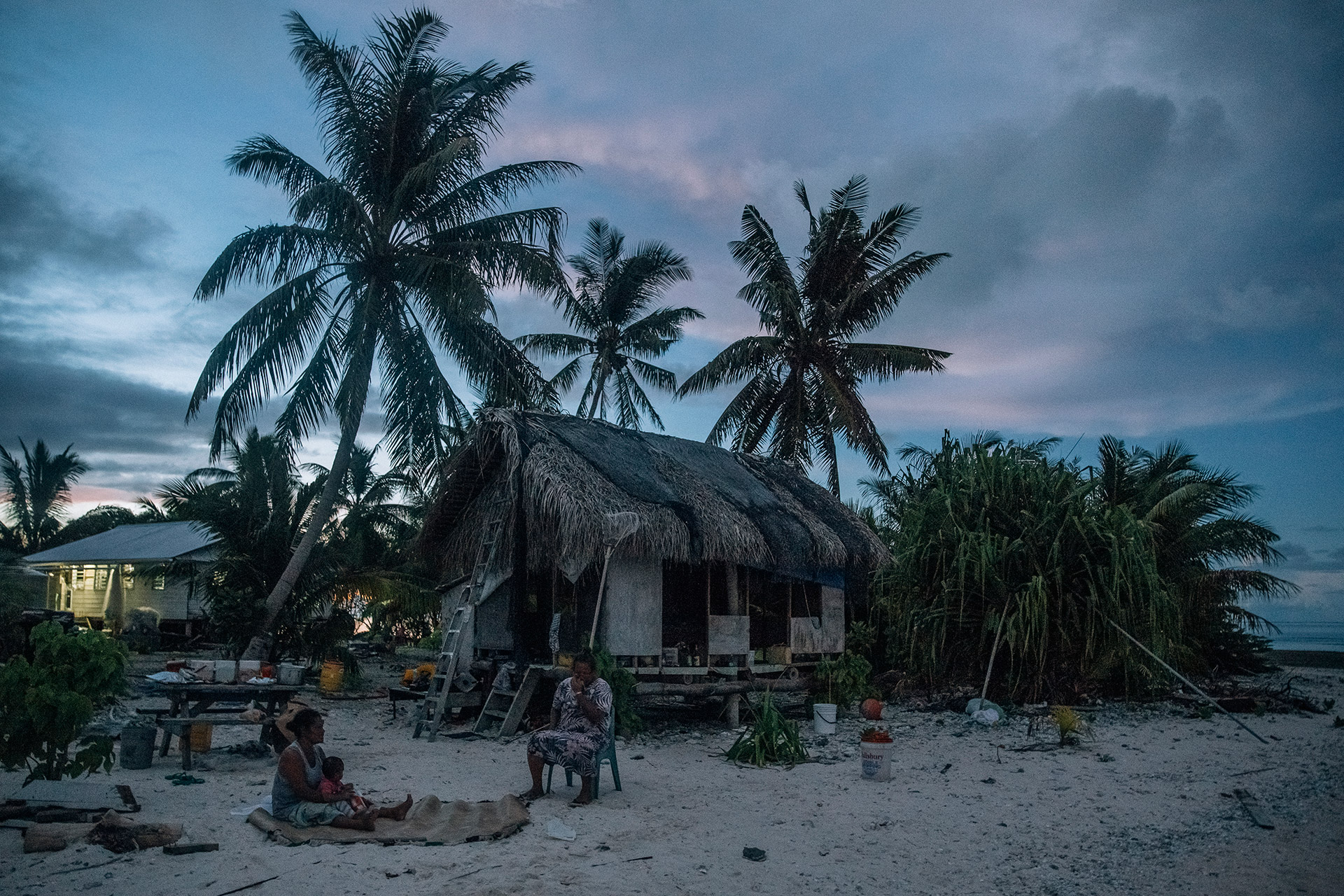
People are sitting near one of the “picnic houses” — one of the traditional Polynesian homes that still remain in Tokelau. Most of the citizens live in more modern housing that was built with the financial aid of New Zealand.
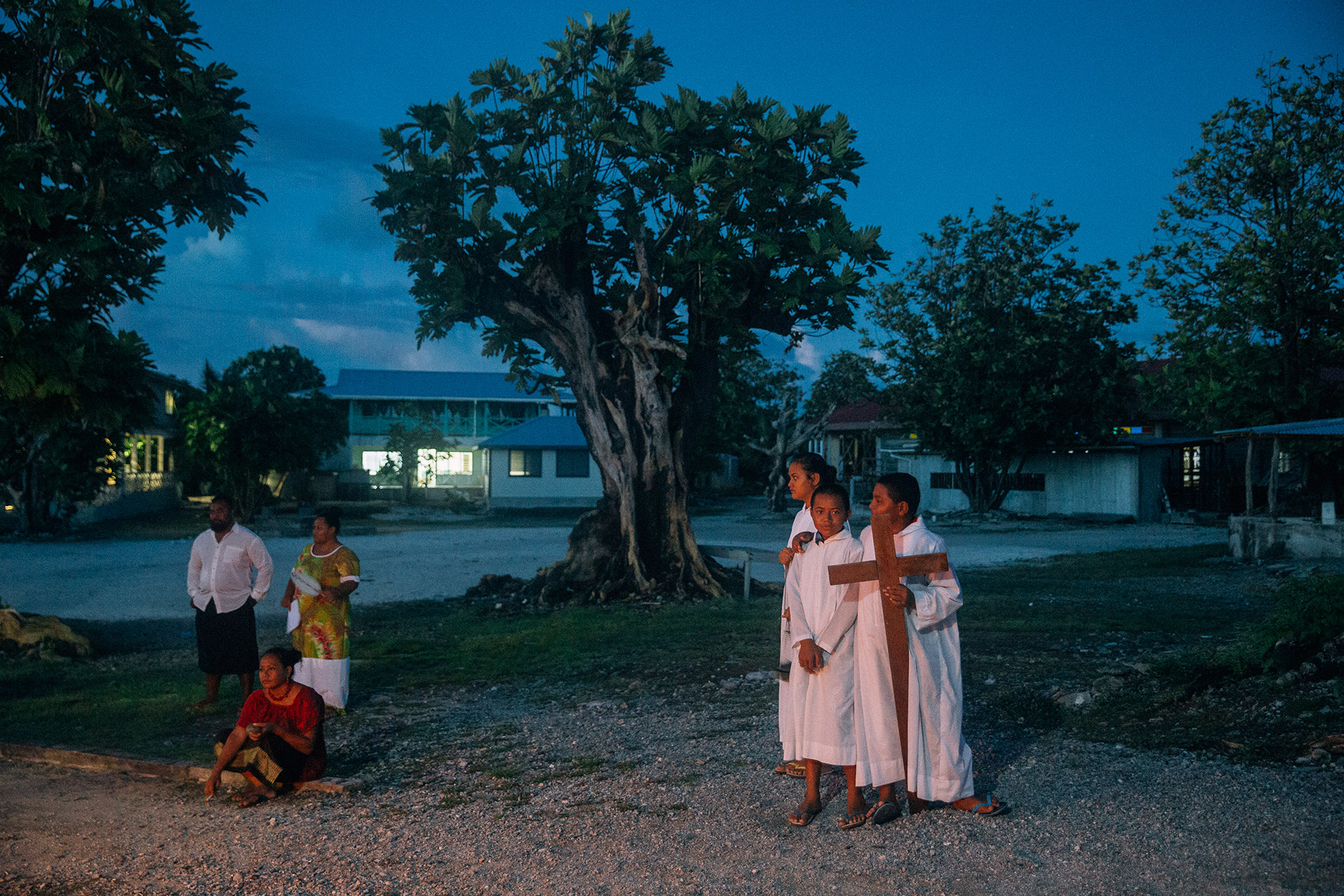
Children from Fale village standing in front of the Catholic Church on the evening before Easter Day.
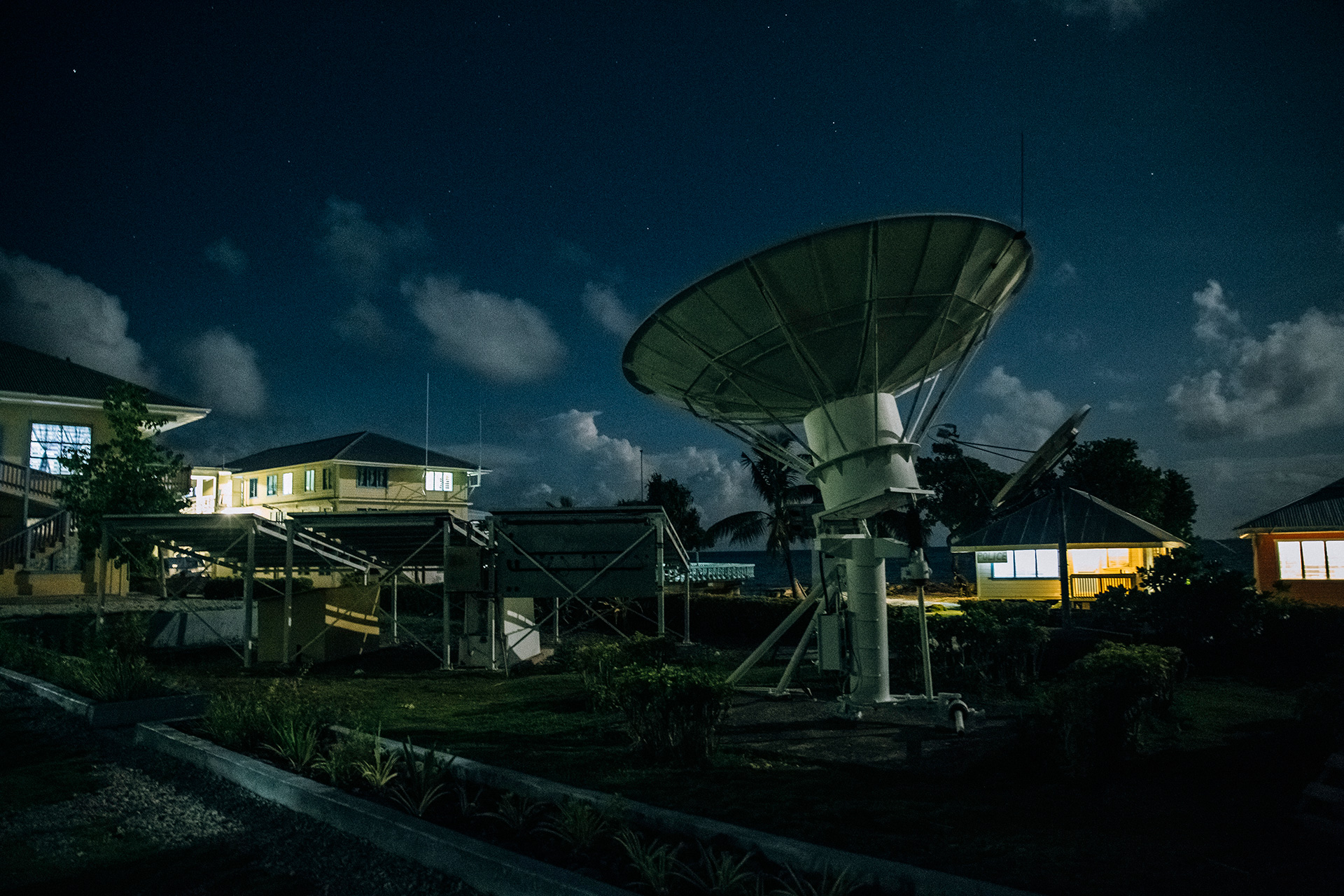
A satellite dish on Nukunonu Atoll used to provide a high speed Internet connection to its residents. Tokelau's GDP has increased by more than 10% because of registrations of domain names under its own domain, .tk. According to studies, Tokelau is now the third most popular country domain name after Germany and the UK. Tokelau's .tk suffix has over 31 million registered domains and it is the world's first Internet provider that runs on 100% renewable energy.
I was able to join the nighttime communal fishing: it is organized to replenish the stocks. All men take part in it, and they bring back large and small fish, as well as sharks. The catch is distributed between all the families of the atoll, and the young, the old, and even babies and guests receive equal portions. Tokelau is probably the only country in the world that has succeeded in building communism. Everything belongs to everybody. People receive some symbolic salary from the New Zealand government, and otherwise they all help each other.
Various sports are also popular in Tokelau, people play volleyball or rugby all the time. On Sunday nights, women play cricket. Everything is solar-powered on Tokelau, people even don’t switch the lights off at night, as there is more than enough energy. Every islet of the atoll has its purpose — for instance, the two large islets are residential. One of them has the infrastructure, including the bank, the Internet provider, antennas, hospitals, and a power substation.
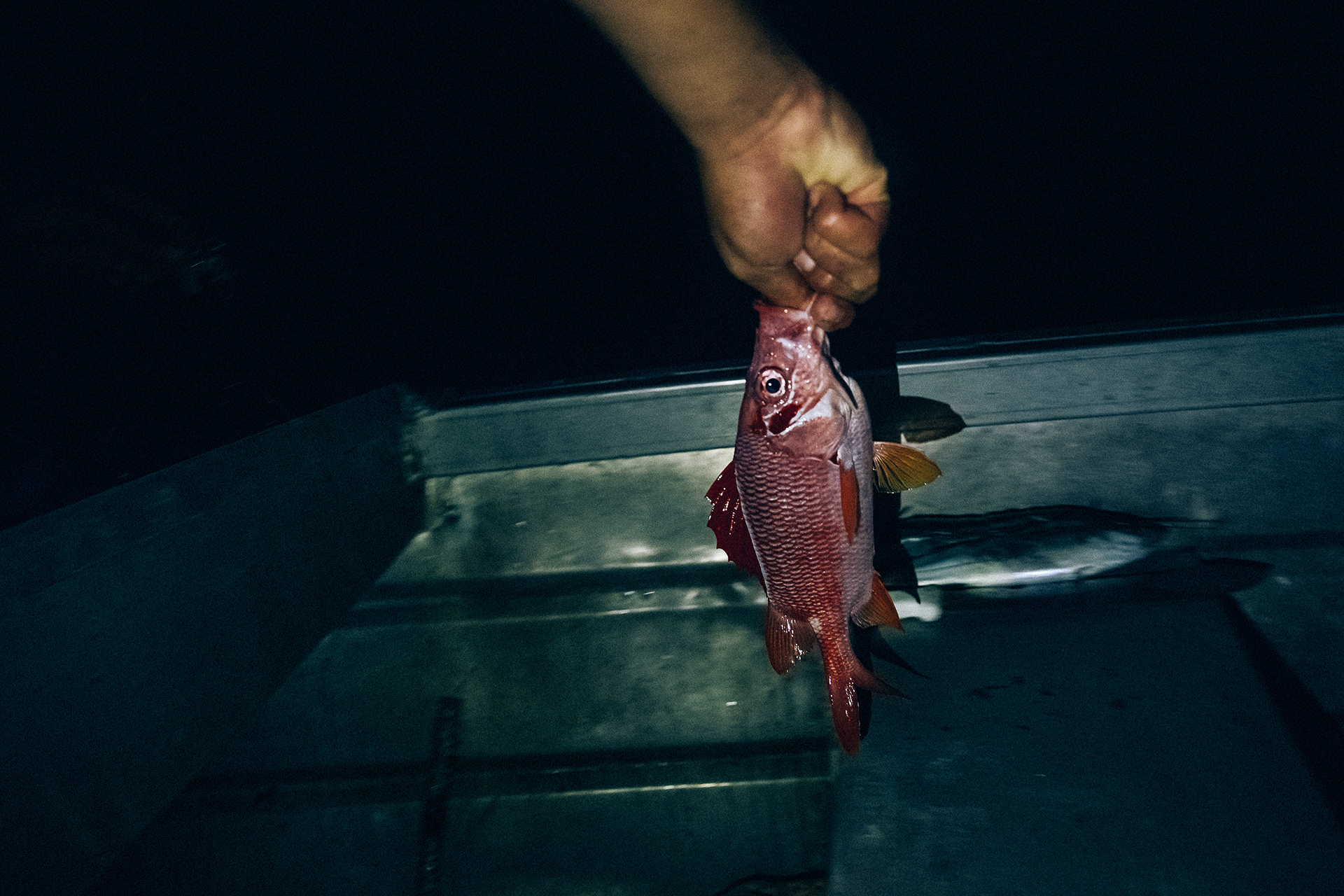
Bili Bili, 17, holds up a fish that he just caught during taula, a weekly communal fishing in the ocean.
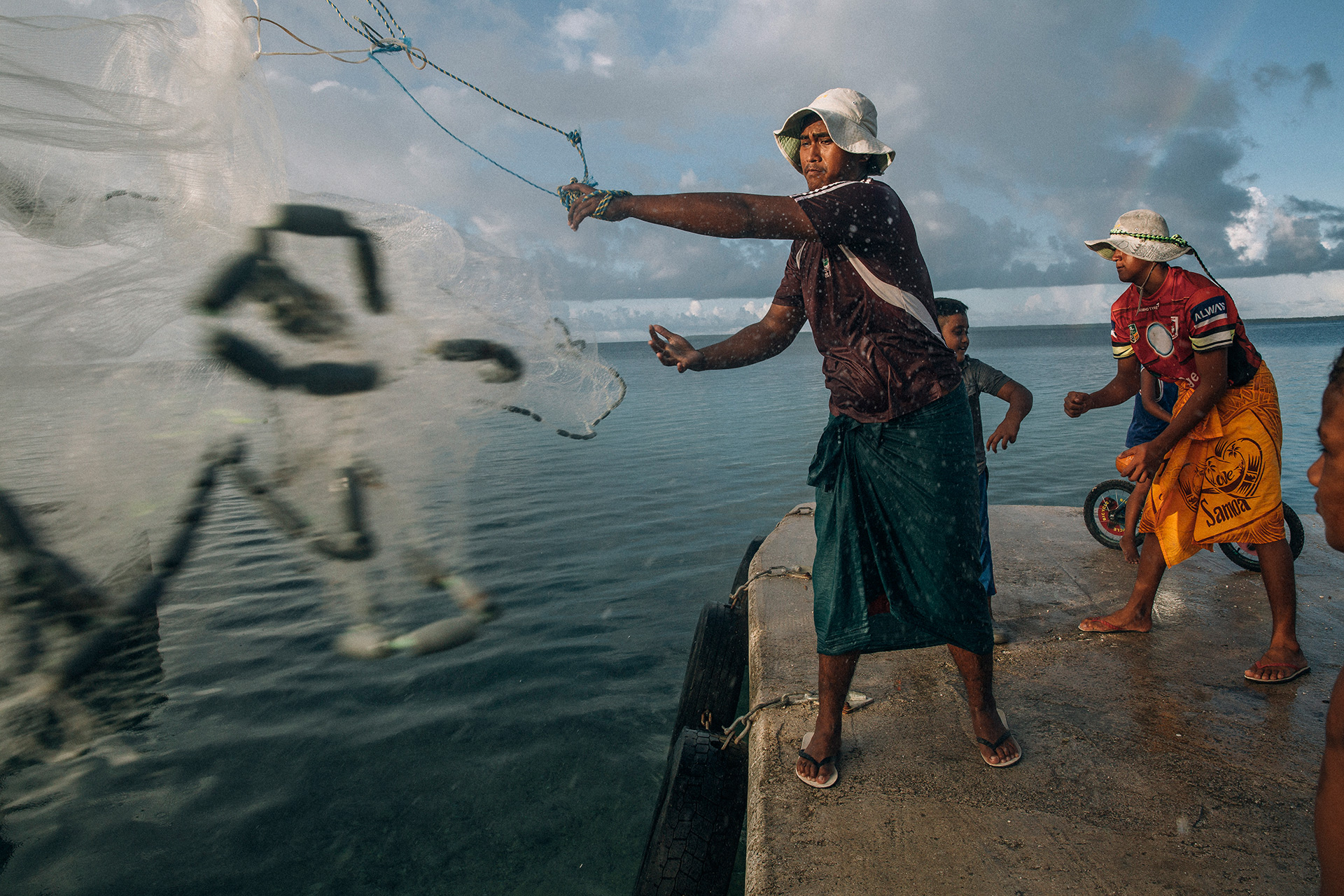
JJ, 17, casting his fishing net into the sea from a jetty in Fale village.
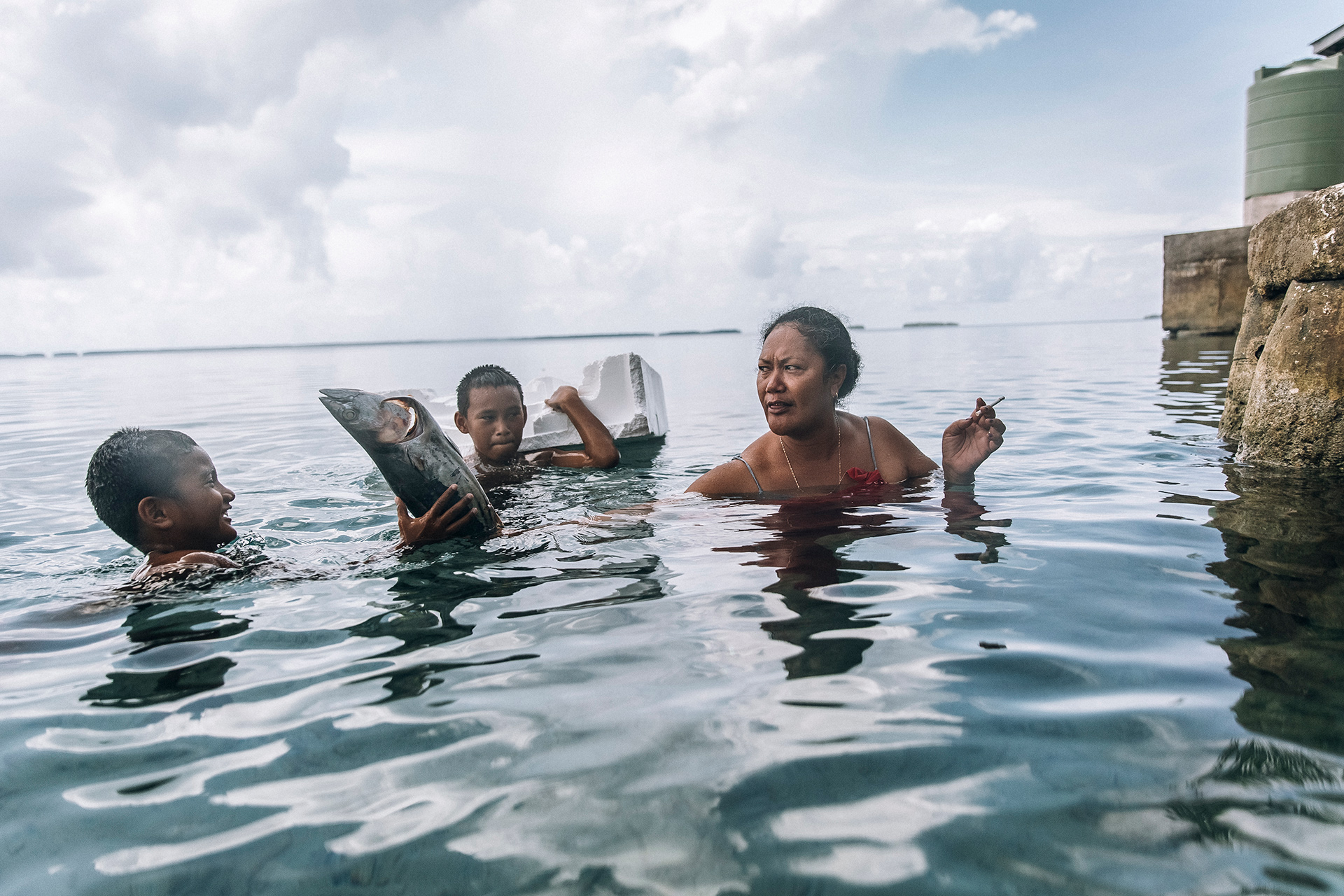
The people of Fale village in Fakaofo Atoll spend a lot of time in the cool water of the lagoon. They usually chat, smoke cigarettes and eat raw fish with coconuts.
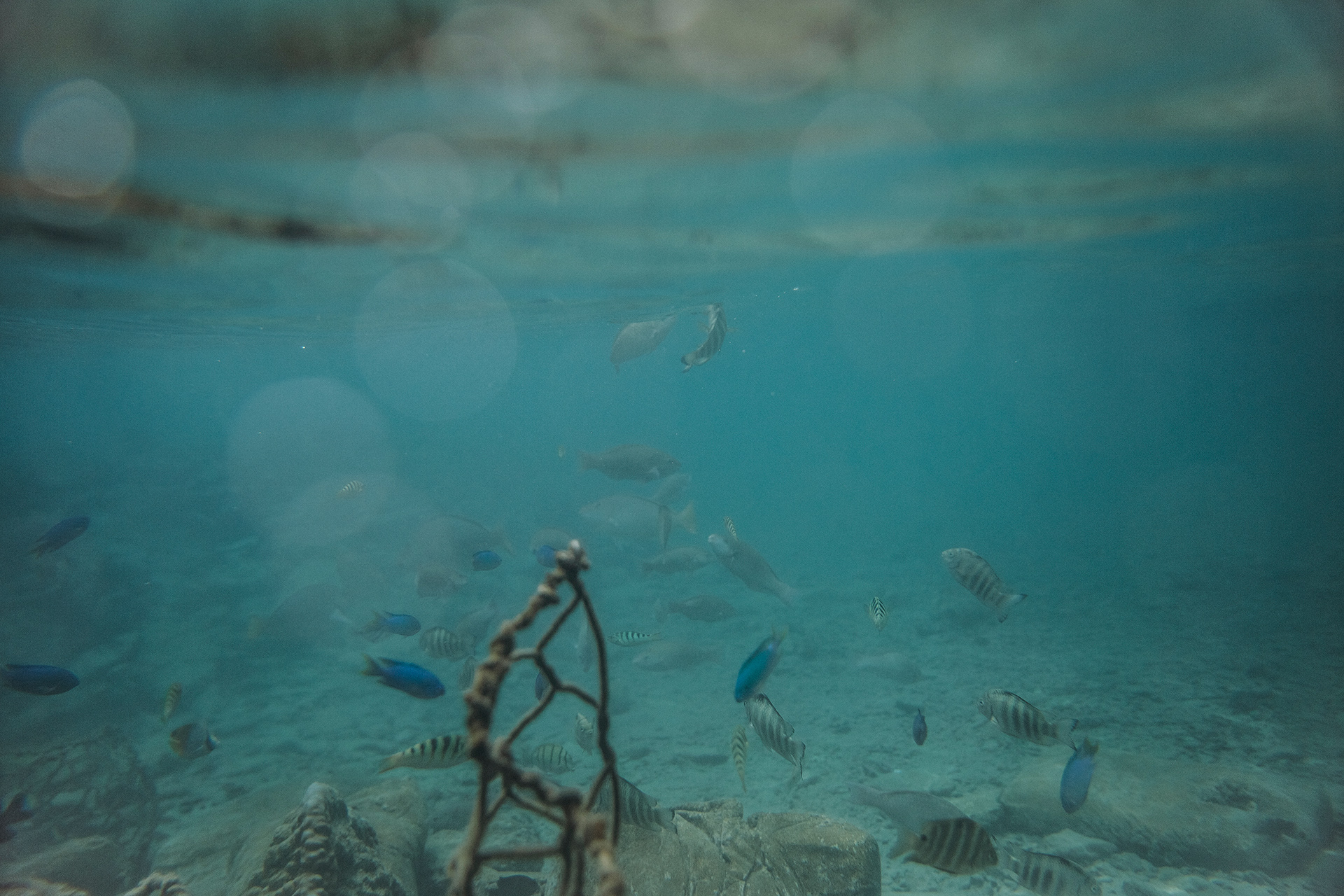
Fish in the Fakaofo lagoon.
There are two islets allocated for cemeteries, and there is an islet that became a pig farm — people take a boat there every day to feed their pigs. Other islets serve as vegetable gardens or picnic spots. Life here in general looks like a tropical heaven. Very few tourists get here: Tokelau citizens try not to advertise their country, because they are trying to protect their children from the outside influence and to live inside their small community.
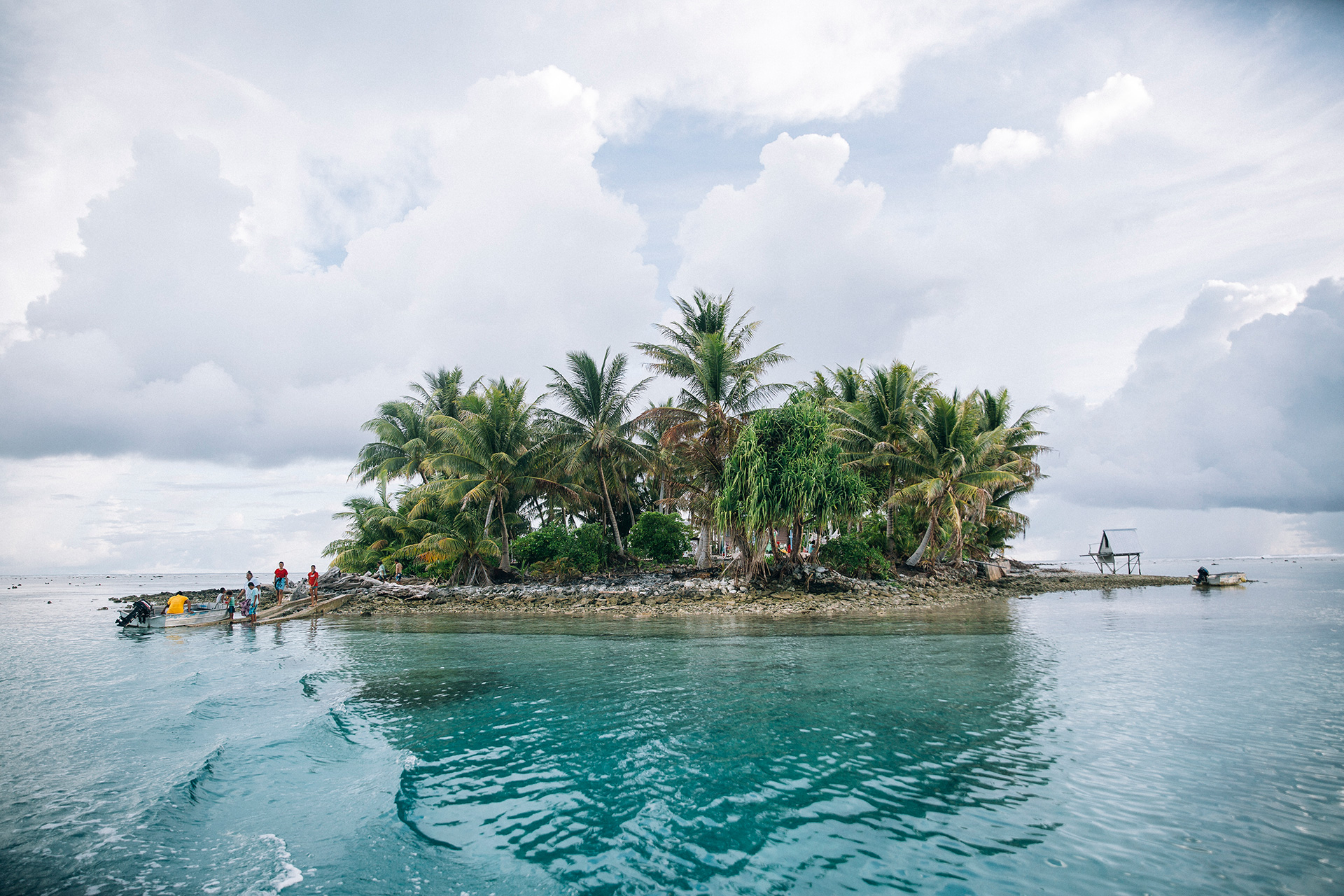
Teafua Tanu Islet which is used by Fakaofo Atoll's residents as a Catholic cemetery.
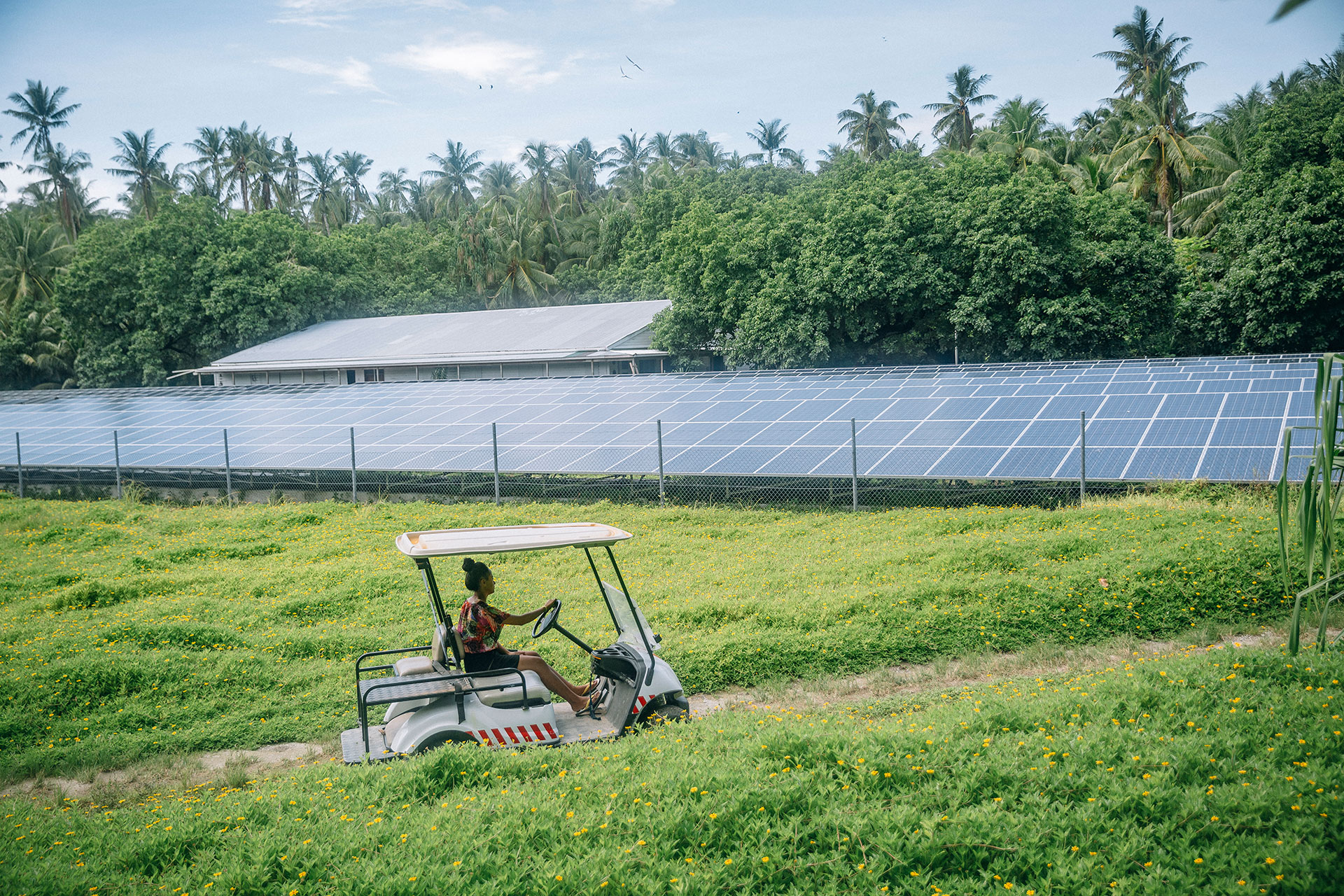
Lagi, 22, driving an electric golf cart near a Fakaofo solar array station on Fenua Fala Islet. Residents use electric vehicles to drive around the islands. All three Tokelauan atolls are supplied by solar energy.
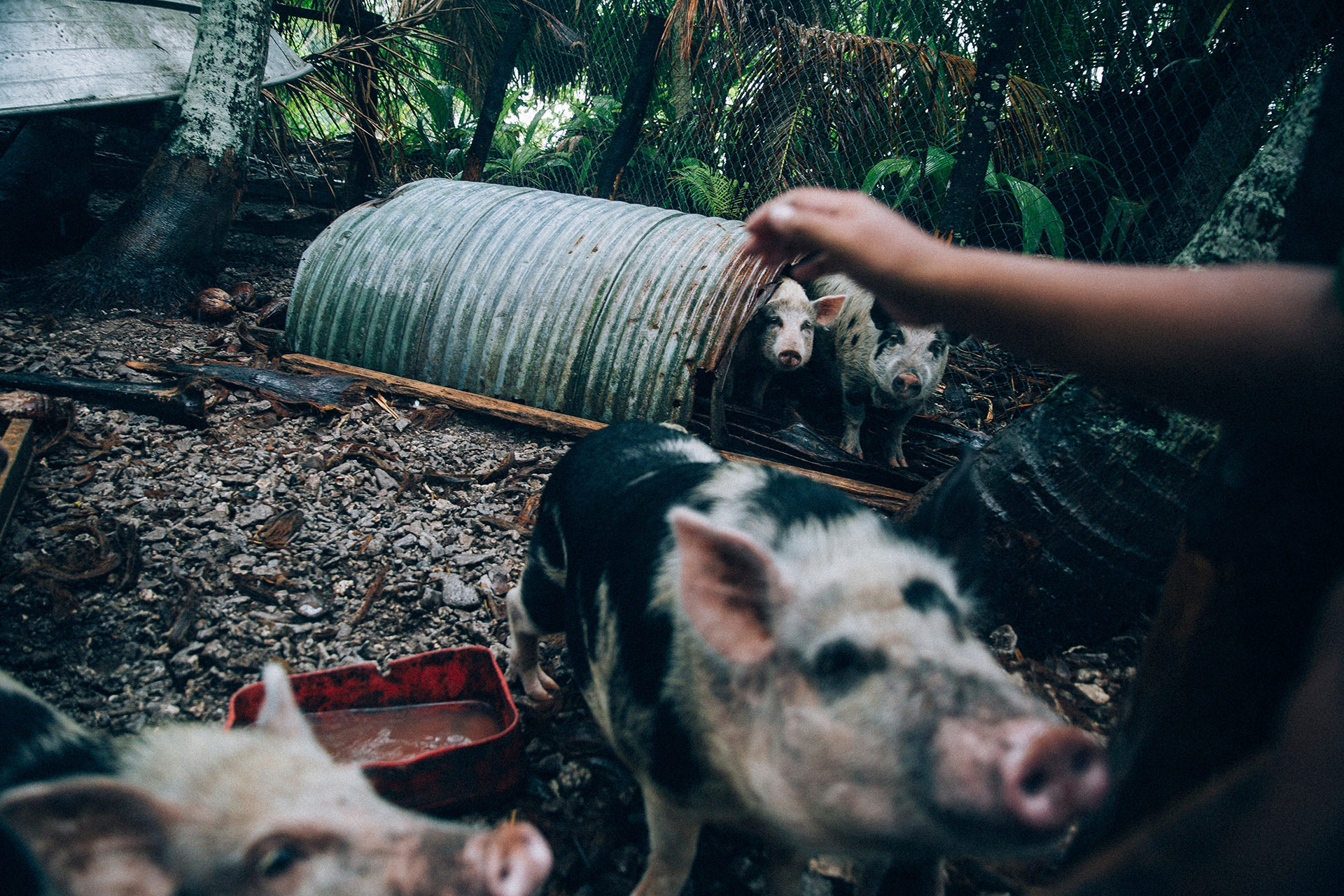
Tokelau Energy manager Robin Pene has plans to generate more electricity using biogas from pig dung combined with a wind turbine system.
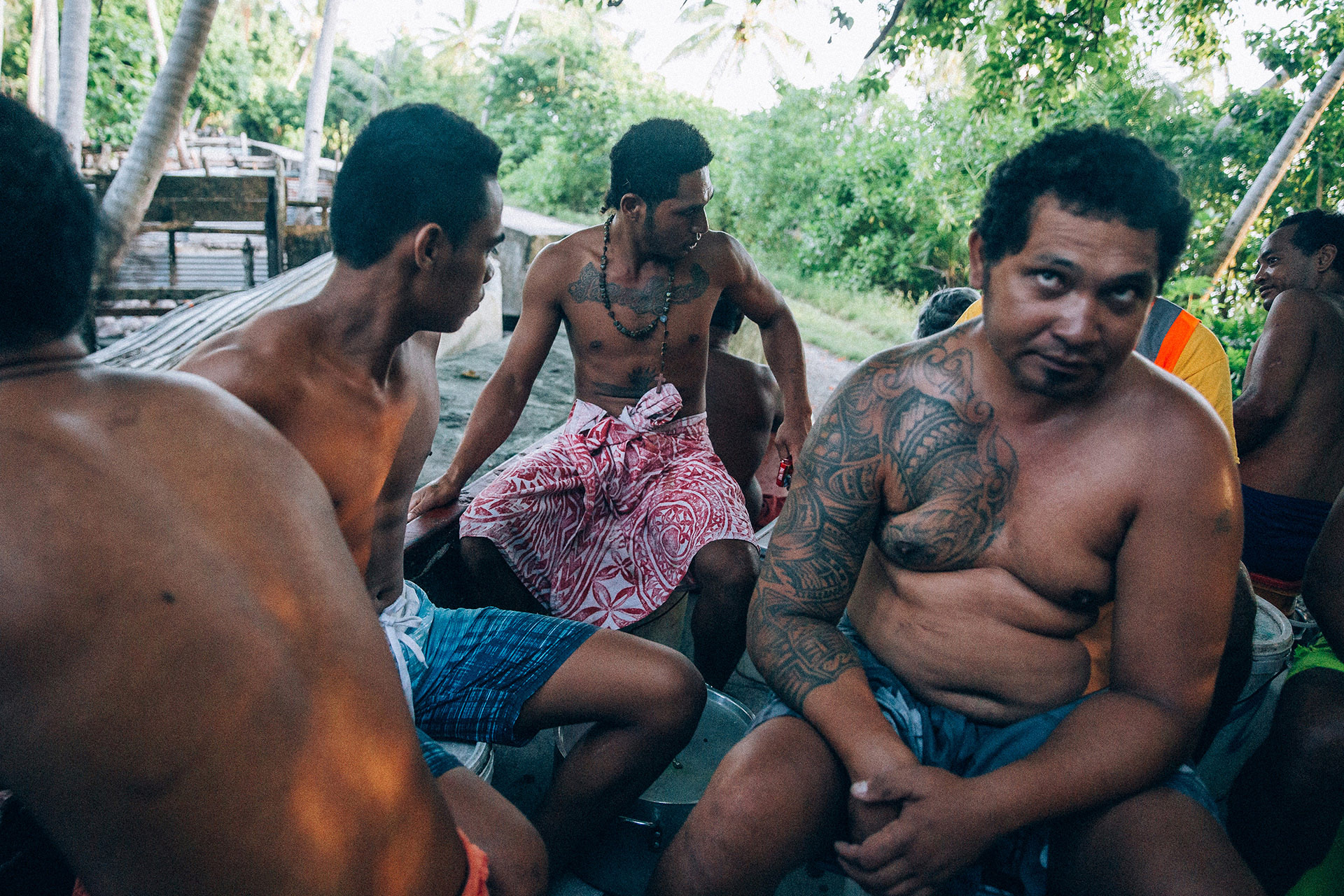
Masae Lui (right) traveling on a “pig truck” to a communal pigsty located on the main islet of Nukunonu Atoll, on the further side of the village. The free truck picks up people every morning and drives them to feed pigs.
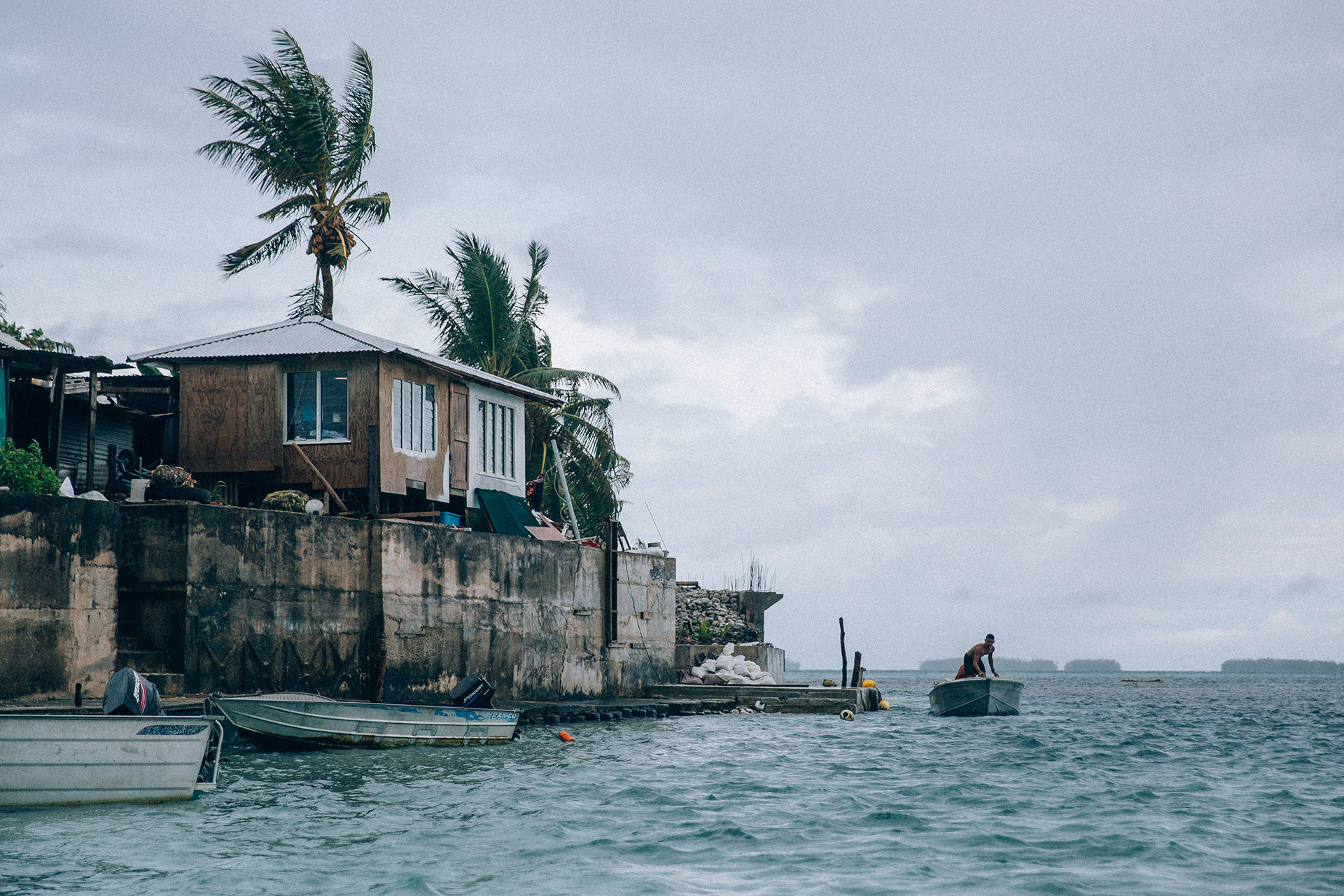
A man on his boat passes near a house in Fale village. Fale Islet has a height of no more than two meters above the high water mark during ordinary tides. In an attempt to fight the rising sea levels, Fale residents have enclosed their islet in concrete seawalls between five to seven meters high, hoping to protect their homes from storm surges.
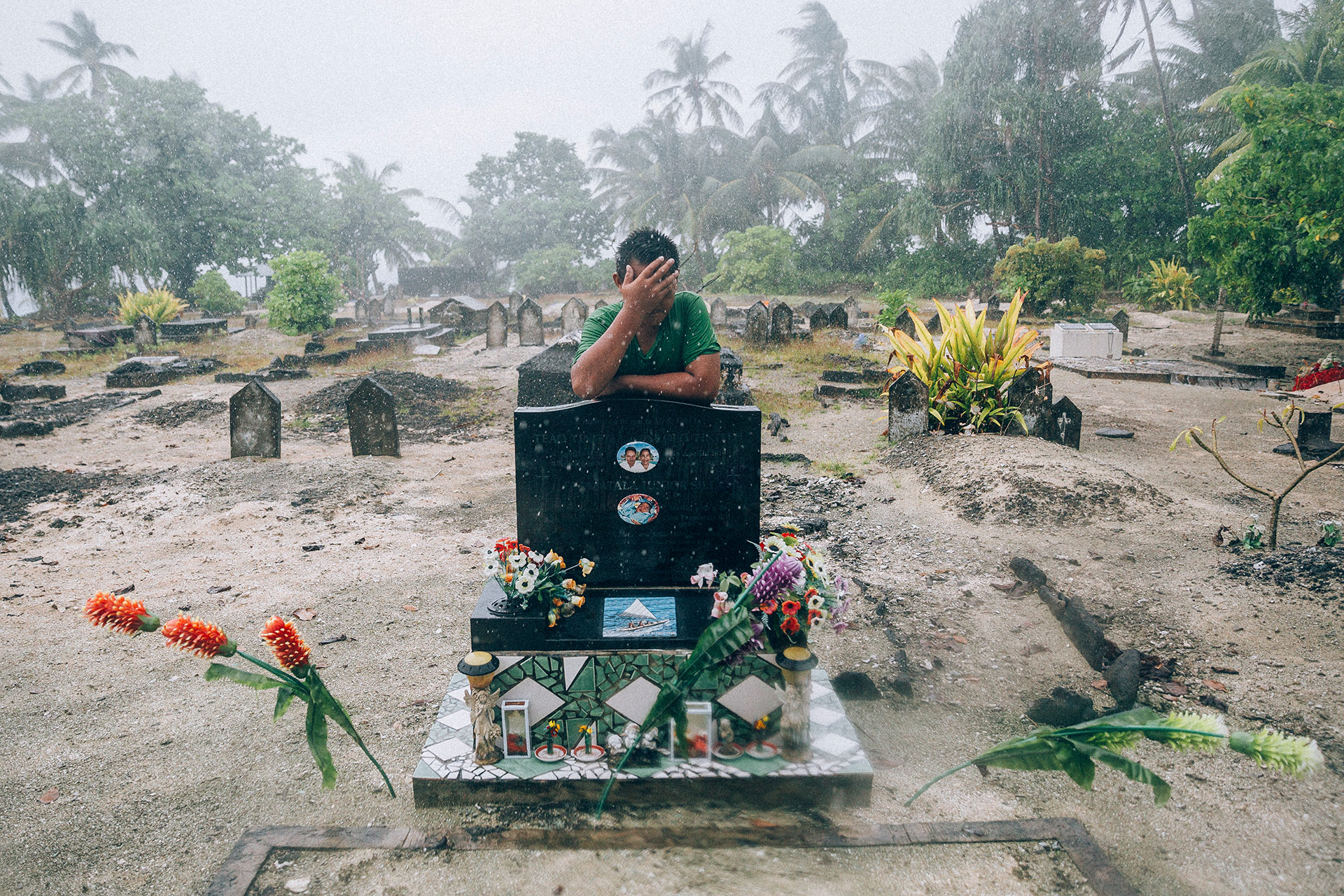
Patemo Tafia, 13, standing near a grave at Protestant cemetery on Pataliga Islet of Fakaofo Atoll.
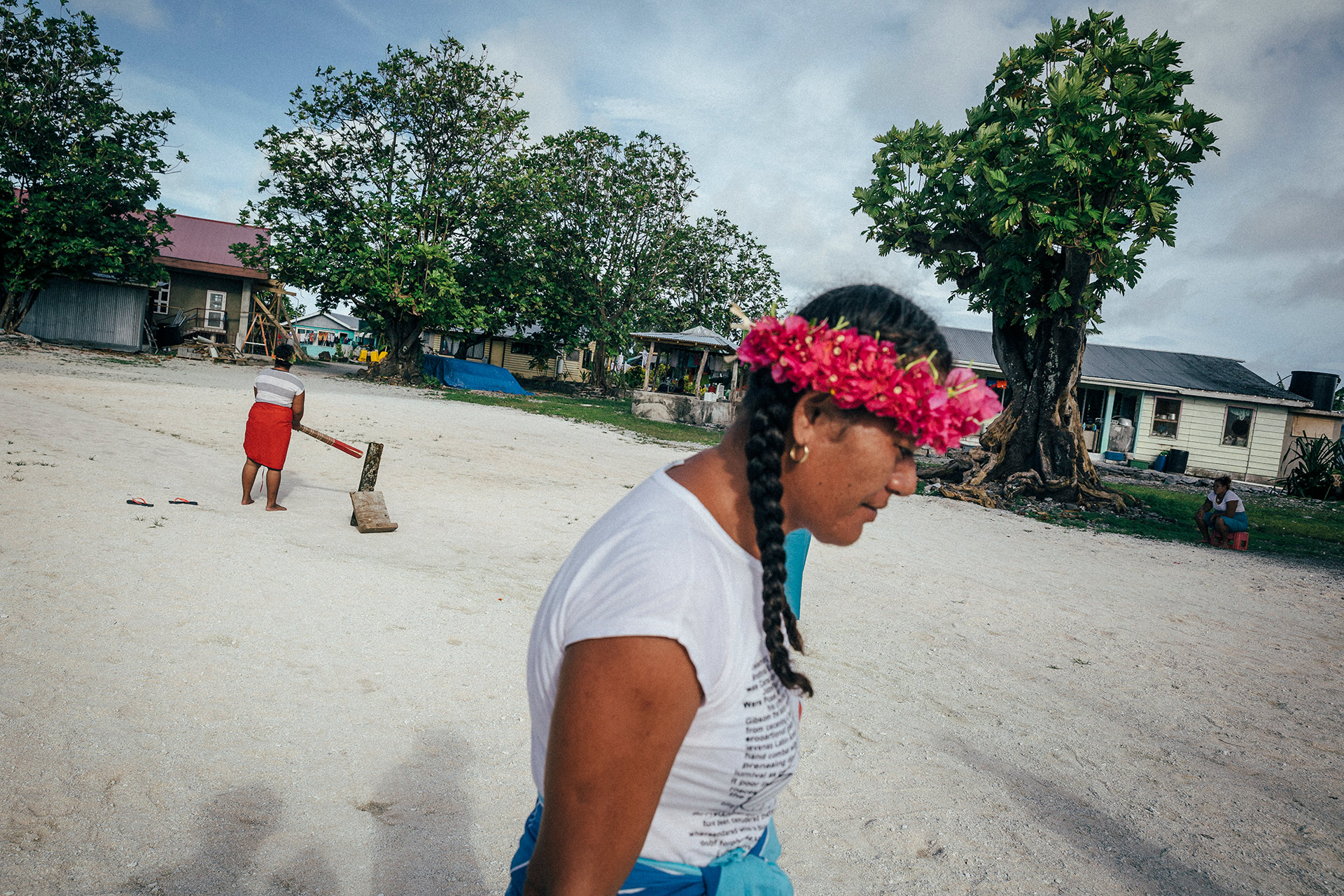
Women from Fakaofo Atoll playing cricket on the main square of Fale village.
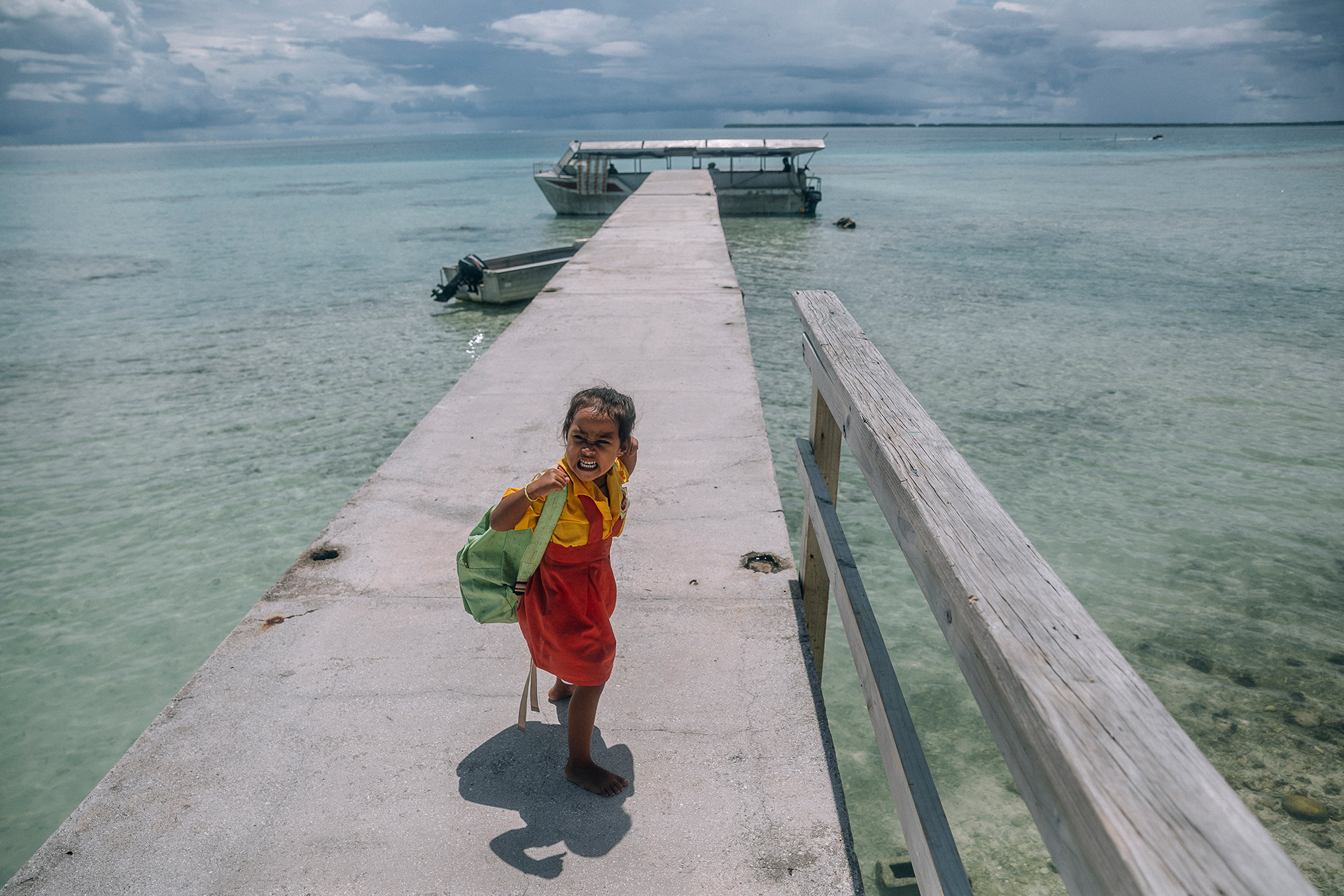
A school girl standing on the school's jetty on Fenua Fala Islet.
